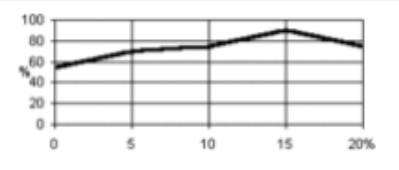Enhanced TDS
Identification & Functionality
- Blend
- No
- CASE Ingredients Functions
- CI Number
- Chemical Family
- Product Code
- MITM13446
- Single Ingredient
- Yes
- Technologies
- Product Families
Properties
- Color (Properties)
- Physical Form
- Fastness Data
Fastness cotton viscose standard depth 1-12 1/6 1-3 1/1 2/1 1-12 1-6 1-3 1/1 2-1 Daylight 3-4 3-4 4 4-5 5 3-4 4 4-5 5 5 Light-Xenotest 3-4 4 4-5 5 5 4 4-5 4-5 5 5 standard depth 1/1 aftertreated untreated aftertreated untreated Water 4R 5 5 4R 3 4-5 4R 4-5 5 3-4R 3 4-5 Washing 40°C 4 3-4 5 3-4 3-4 4-5 4-5 3-4 4-5 4 3-4 5 Washing 60°C 3-4RD 2 4 3 2 4 3-4 2 4-5 3 2 4-5 Domestic laundering A1S 3-4 1 4-5 2-3 1 4-5 3-4 1 4-5 2-3 1 4-5 Perspiration acid 4R 4-5 5 3-4 4-5 5 4-5 4-5 4-5 4 4-5 4-5 Perspiration alkaline 3-4R 4-5 5 3-4 3-4 4-5 5 4-5 4-5 4 4-5 4-5 Fastness Standards:
- Daylight ISO 105-B01-1994
- Light Xenotest ISO 105-B02-1994
- Water ISO 105-E01-1994
- Washing ISO 105-C01-1989
- Perspiration ISO 105-E04-1994
The fastness figures in the tables mean: Fastness to light other fastness properties
1 - very poor 1 - poor 2 - Poor 2 - Moderate 3 - Moderate 3 - Fairly Good 4 - Fairly Good 4 - Good 5 - Good 5 - Very Good 6 - Very Good 7 - Excellent 8 - Unsurpassed The letters indicate the following changes in shade:
R - redder D - duller Bl - bluer Br - brighter Y - yellower S - stronger G - greener W - weaker The numbers at individual dye fastness data mean:
- First number - change in shade.
- Second number - staining on the undyed adjacent fabric which is of the same material as the tested sample.
- Third number - staining on the undyed adjacent fabric.
- Product Properties
Dischargeability:
- Dischargeability neutral/alkaline: 4/3.
- Dischargeability is expressed by the five-member scale where.
- 5 means - the dye is very well dischargeable.
- 4 means - the dye is well dischargeable.
- 3 means - the dye is suitable for coloured discharge.
- 2 means - the dye is poorly dischargeable.
- 1 means - the dye is not dischargeable.
The neutral and alkaline dischargeability of individual brands is assessed so that the dyed fabric is printed with discharge paste, then dried and steamed in a high-speed steamer for 7 >at 100°C.
Dead and Unripe Cotton Covering:
- The brands suitable for dead cotton covering are marked +. The coverage can be improved by the material pre-treatment by means of causticizing or dyeing at temperatures above 100°C.
Stripy Viscose Covering:
- The differences in stripy viscose rayon can be best covered with brands which are marked +.
Dyeing at Temperatures above 100°C.
- Dyeing at 120°C (30/60 min) -/-
- The dyes suitable for high temperature dyeing are marked +.
Technical Details & Test Data
- Technical Data
Temperature Effect:

Affinity Dependance on the Temperature:
- The curve shows the dye quantity which exhausts from the bath onto the fibre after 60 >of isothermal dyeing with addition 1% soda ash and 20% sodium sulphate calc. at the temperature shown on the horizontal axis.
Influence of Electrolyte:

Electrolyte Influence:
- The curve shows the electrolyte concentration influence on dye exhaustion from the liquor. The values were obtained in the course of 60 >of dyeing in a bath containing 1% soda ash and sodium sulphate calc., its quantity is given on the horizontal axis.
Packaging & Availability
- Packaging Type
Principal Information
- Group Principal Number
- S002261
- Principal
Other
- Appearance (SDS)
- Powder
- Flammable Nature (SDS)
- Like other organic dust can combine with air form explosive mixtures
- Item Number
- Odor (SDS)
- Odorless
- Other Hazards
- Dust/air mixture can be explosive
- USA/DOT UN Number
- Not Applicable
- Shelf Life & Stability
Value Units Test Method / Conditions Shelf Life 0.0 d d - SDS Physical and Chemical Properties
Value Units Test Method / Conditions Lower Explosion Limit (SDS) 60.0 g/m³ g/m³ Solubility In Water (SDS) 25.0 g/L g/L at 90°C pH (SDS) 9.0-10.0 - at 20°C, 10 g/L H₂O
